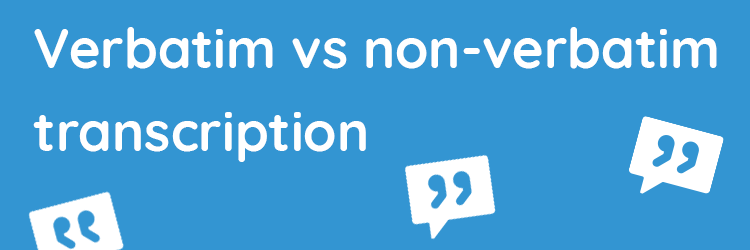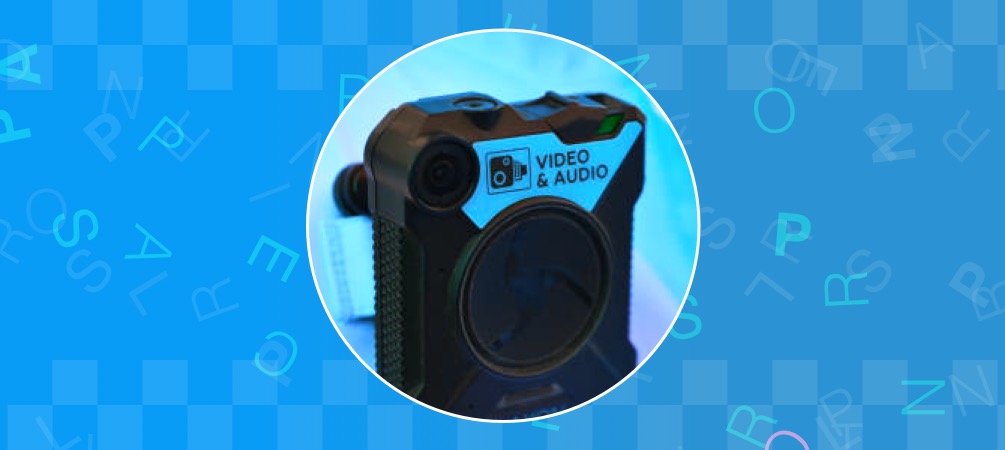Verbatim vs non-verbatim transcription
What is verbatim transcription?
‘Verbatim’ simply means “word for word”. In the transcription industry we use different types or levels of verbatim transcription to balance the need for absolute word-for-word accuracy against the need for a readable, meaningful document.
The type of verbatim transcription you require will depend entirely on how you intend to use the information being gathered.
Do you need a clear, well-ordered document for circulation amongst your colleagues or a text packed with information for analytical purposes?
Choosing the wrong type of verbatim could result in disastrous consequences:
– Market research missing valuable raw data
– Unprofessional business communications with reminders of every nervous stutter
– Published/academic documents with incorrect sentence structure
– Medical transcription that is meandering and full of repetition
– Court transcription full of informal slang
– Police interviews omitting some hesitation or false start that provides vital context
An expert transcription company will be happy to talk through your options to find the best solution for you, but understanding the difference between types of verbatim from the outset can assist you in communicating your needs with your transcription provider more effectively.
Let’s explore why verbatim transcription might be used and also the various different versions of verbatim transcription services available.
Our aim with this article is to help give you a good understanding of the key differences.
What is full verbatim transcription?
Full verbatim transcription provides complete accuracy to the original conversation.
Word-for-word and including all filler words, sounds, breaks in speech and even external noises occurring whilst the dialogue is ongoing, full verbatim transcription offers the very highest levels of precision.
Thanks to the total accuracy, full verbatim is perfect when the transcription needs to be intensely analysed for even the slightest of verbal cues to ensure nothing is lost in translation.
Full verbatim transcriptions are often used for legal purposes and in circumstances where every word counts.
[thrive_leads id=’2023′]
What does clean verbatim transcription mean?
When most of us talk we use filler words. We can’t help it.
We naturally, perhaps subconsciously, throw words that have no contextual meaning into our sentences. Words such as ‘like’ and ‘you know’ are firm favourites.
Noises and other filler items such as ‘erm’, ‘uh’ and even things like throat clearing, laughter, hesitations and pauses are added into our day-to-day dialect.
While these are easily ignored in face-to-face conversations, they can break up the flow of a transcript and make the meaning harder to follow.
Clean verbatim transcription is when all filler words are stripped out. The extras including ‘likes’, ‘you knows’, ‘erms’ and ‘ers’ are all removed from the transcription text.
Clean verbatim transcription is particularly useful and widely used for business communications/meetings and market research groups, where the removal of added ‘noise’ would benefit the application of the transcription.
What is intelligent verbatim transcription?
Intelligent verbatim transcription goes even further than clean verbatim transcription.
Not only are filler words removed but the whole thing is polished up, with improvements made to grammar, to ensure the transcript is perfectly readable whilst retaining complete accuracy.
Any transcripts that are destined to be published, including academic transcription and medical transcription, will particularly benefit from intelligent verbatim transcription.
Are these my only options?
Not at all. Do you need your interviewer’s questions to be cleaned up but your interviewee’s words exactly as spoken? Would you like the filler stripped out but pauses left in?
If necessary your transcription provider should be able to offer a bespoke solution incorporating a mixture of the different elements of verbatim transcription.
[thrive_leads id=’2023′]
Verbatim transcription in qualitative research
Verbatim transcription is also crucial to the accuracy and interpretation of qualitative research.
By precisely transcribing interviews and conversations, the data and findings from qualitative research can be used as a highly dependable source of information.
Researchers can examine the content, and analyse and interpret its detail.
Verbatim transcription helps them to make judgements on the evidence and provide observations about what needs further investigation or review.
Verbatim transcription rules
So, what rules have to be followed to differentiate full verbatim transcription from more basic types of transcription services?
Here are a few of the main rules for verbatim transcription:
– Include all fillers and false starts to sentences (this is when someone starts to speak but doesn’t finish their sentence).
– All non-verbal communication needs to be present including laughter, pauses and gestures (in the case of video and DVD transcription). This will help to give a full picture of the message being conveyed.
– Everything needs to be captured with no elements of paraphrasing. Verbatim transcription is word-for-word, with nothing left to interpretation.
– All external sounds and actions should be captured. If someone walks through a door or an aside conversation takes place, everything must be documented.
Hopefully, this gives you a good overview of verbatim transcription and how it differs from non-verbatim transcription, along with details of the main types of verbatim transcription and some of its most common uses.
[thrive_leads id=’2023′]






